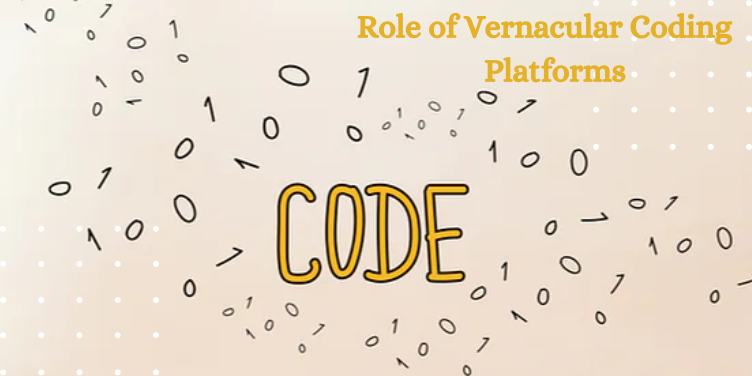Role of Vernacular Coding Platforms in Bridging the Digital Divide


Vrinda Raju
a year ago
Did you know your first language could do wonders? In toddlers, learning something new in their native language helps them grasp the subject topic better when compared to learning it in an acquired language. Turns out it works exactly the same in fully grown adults too! This is mainly because, ultimately, your instincts naturally drive you to your comfort zone. For instance, going back home after a long stay in a foreign country and having a home-cooked meal basically hits you in the feels. This idea is essentially what’s behind the core of most vernacular ed-tech platforms.
Vernacular coding platforms first saw their rise during the Covid-19 pandemic. The reason for that is with the onset of the pandemic, access to education was cut off for many of the underprivileged. This led to many transitioning to online learning. Skills like coding require a lot more grasping of the concept to be able to execute it to perfection. Unfortunately, most of the coding platforms out there are in English, which isn’t India’s first language. Even if you’re an English speaker, chances are you probably need to translate it into your native language. This may lead to certain mismatches in concepts as well. Coding, as one of the most sought-after skills in the twenty-first century, has enabled young people to pursue careers in it, and what better way to learn it than in your native tongue? This is where vernacular coding platforms come in.
They provided for everyone with the idea - to each his own. Coding platforms that dealt with experts who were both knowledgeable in their area of expertise and fluent in the user’s mother tongue helped individuals gain a better command of the coding language. Vernacular coding platforms also helped level the playing field by making coding available to everyone as long as they had a stable internet connection. Meaning, the only tool you need to learn a programming language is interest!
Bridging the Gap between the Underprivileged and Digital literacy
Vernacular coding platforms helped bridge the gap between the underprivileged and digital literacy. This meant that the underprivileged could also reap the same benefits by taking up coding. From Kashmir to Kanyakumari, it ensured that everyone had an opportunity to learn how to code, even in the most remote part of India.
This was essentially helpful in empowering women, especially in India, where not many but a few believe the stereotype that women belong in the kitchen. It helped women explore their niche and build up their soft skills by merely having one tool—an internet connection. Because of the upskilling enabled by vernacular coding platforms, digital literacy is no longer a distant concept for many. With the introduction of vernacular platforms, programming, previously thought to be a male-dominated field, is now expanding fairly. More people can now enter the field, regardless of their gender.
Coding platforms in native languages also helped strike down digital barriers by helping individuals from non-technical backgrounds gain access to coding. No, you don’t have to be a tech-geek, all you need is intrigue! When you learn in your native language, the grasp you have on a particular subject is considered to be better. This is why languages like mathematics are said to stay away from the boundaries of language. All you need to know is the idea behind it! It also helps your learning pace, which means you can possibly multitask while learning, i.e., work or study while you’re learning. You can study while also working a 9-to-5!
Programming for all
Imagine reading this blog in Chinese. How unfamiliar would it be to you? Moreover, would it garner your interest? This is exactly how a non-English speaker would feel, and it’s high time this changed. Learning mustn't be limited to language.
Vernacular coding platforms have made programming accessible to all without regard to their backgrounds. Training in regional languages at affordable prices has affected millions in India by breaking the digital divide. Instead of forcing a non-English speaker to learn English just for the ability to code, this practice allows fair play. Knowing the context is important while coding, and the challenges faced by a non-English speaker are quite apparent there.
Dialect aims to fix this particular gap by making coding accessible to all. Focusing on and grasping coding concepts via your native language makes the process of learning a whole lot faster and easier, and this is at the heart of Dialect’s initiative.